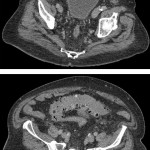Re: Effects of fluorescent light-guided transurethral resection on non-muscle-invasive bladder cancer: a systematic review and meta-analysis
Sir,
In the field of non-muscle-invasive bladder cancer (NMIBC), accumulating data on hexaminolevulinate (HAL) or 5-aminolevulinic acid (5-ALA)-guided blue-light cystoscopy (BLC) show significant benefits over standard white-light cystoscopy (WLC) in terms of improved detection and reduced recurrence rates. A notable exception to this body of evidence is a meta-analysis published by Shen et al. in the BJUI in 2012 [1]. We have been puzzled by this discrepancy, which is at odds not only with our own experiences as long-term users of HAL and 5-ALA -guided BLC, but also with a more recent meta-analysis produced by the same department [2]. We therefore examined the paper by Shen et al. in order to better understand their conclusions and, in the process, identified a number of areas where the data reported in the meta‑analysis do not appear to match the figures in the original publications [3–16].
In particular, we are concerned that, where the original article reports detection and recurrence rates as percentages only, Shen et al. sometimes appear to calculate absolute numbers based on inappropriate denominators (e.g. an unselected patient population when the trial is about a specific subgroup), resulting in a dilution of the reported effect. In addition, on occasion, the BLC and WLC groups are transposed and recurrence rates are reported as recurrence-free survival rates. We provide a summary of the discrepancies that we have identified in Table 1.
Table 1: Potential data errors in the meta-analysis by Shen et al. [1] (discrepancies between the meta-analysis and original data highlighted in red)
We believe that these inconsistencies are likely to have a significant effect on the results of the meta‑analysis, as the authors find no significant difference in rates of tumour detection (including carcinoma in situ) or recurrence between BLC and WLC groups. We would like to emphasise that the conclusions that Shen et al. draw are in direct contrast to the general evidence base on HAL and 5-ALA-guided BLC. We are concerned that readers of the article by Shen et al. who have not seen the original papers may have a biased opinion of the value of BLC. We therefore respectfully request that you review the original publication and, if appropriate, publish an erratum covering any individual data discrepancies as well as the conclusions drawn from the meta-analysis.
Marek Babjuk1*, Paolo Gontero2, Didier Jacqmin3, Alexander Karl4, Stephan Kruck5, Paramananthan Mariappan6, Juan Palou Redorta7, Arnulf Stenzl5, Roland van Velthoven8, J. Alfred Witjes9, Dirk Zaak10
1Department of Urology, 2nd Faculty of Medicine, Charles University in Prague, Motol Hospital, Prague, Czech Republic, 2Department of Urology, San Giovanni Battista Hospital, University of Turin, Turin, Italy, 3Department of Urology, Strasbourg University Hospital, Strasbourg, France, 4Department of Urology, Ludwig Maximilians University, Munich, Germany, 5Department of Urology, Eberhard Karls University, Tübingen, Germany, 6Department of Urology, Western General Hospital, Edinburgh, UK, 7Urologic Oncology Unit, Department of Urology, Puigvert Foundation, Barcelona, Spain, 8Department of Urology, Jules Bordet Institute, Brussels, Belgium, 9Department of Urology, Radboud University Nijmegen Medical Center, Nijmegen, Netherlands, and 10Department of Urology, Traunstein Hospital, Traunstein, Germany
*Corresponding author: Marek Babjuk, MD, PhD (marek.babjuk@fnmotol.cz)
Acknowledgement
The authors thank Succinct Medical Communications for editorial assistance in the meta-analysis data checking and preparation of this letter, with financial support from Ipsen SA. The authors retained editorial control over the content and the decision to submit this letter.
References
-
Shen P, Yang J, Wei W et al. Effects of fluorescent light-guided transurethral resection on non-muscle-invasive bladder cancer: a systematic review and meta-analysis. BJU Int 2012; 110: E209–E215
-
Yuan H, Qiu J, Liu L et al. Therapeutic outcome of fluorescence cystoscopy guided transurethral resection in patients with non-muscle invasive bladder cancer: a meta-analysis of randomized controlled trials. PLoS One 2013; 8: e74142
-
Riedl CR, Daniltchenko D, Koenig F et al. Fluorescence endoscopy with 5-aminolevulinic acid reduces early recurrence rate in superficial bladder cancer. J Urol 2001; 165: 1121–1123
-
Filbeck T, Pichlmeier U, Knuechel R, Wieland WF, Roessler W. Clinically relevant improvement of recurrence-free survival with 5-aminolevulinic acid induced fluorescence diagnosis in patients with superficial bladder tumors. J Urol 2002; 168: 67–71
-
Kriegmair M, Zaak D, Rothenberger KH et al. Transurethral resection for bladder cancer using 5-aminolevulinic acid induced fluorescence endoscopy versus white light endoscopy. J Urol 2002; 168: 475–478
-
Babjuk M, Soukup V, Petrík R, Jirsa M, Dvorácek J. 5-aminolaevulinic acid-induced fluorescence cystoscopy during transurethral resection reduces the risk of recurrence in stage Ta/T1 bladder cancer. BJU Int 2005; 96: 798–802
-
Daniltchenko DI, Riedl CR, Sachs MD et al. Long-term benefit of 5-aminolevulinic acid fluorescence assisted transurethral resection of superficial bladder cancer: 5-year results of a prospective randomized study. J Urol 2005; 174: 2129–2133
-
Denzinger S, Burger M, Walter B et al. Clinically relevant reduction in risk of recurrence of superficial bladder cancer using 5-aminolevulinic acid-induced fluorescence diagnosis: 8-year results of prospective randomized study. Urology 2007; 69: 675–679
-
Denzinger S, Wieland WF, Otto W et al. Does photodynamic transurethral resection of bladder tumour improve the outcome of initial T1 high-grade bladder cancer? A long-term follow-up of a randomized study. BJU Int 2008; 101: 566–569
-
Burger M, Stief CG, Zaak D et al. Hexaminolevulinate is equal to 5-aminolevulinic acid concerning residual tumor and recurrence rate following photodynamic diagnostic assisted transurethral resection of bladder tumors. Urology 2009; 74: 1282–1286
-
Geavlete B, Jecu M, Multescu R, Georgescu D, Geavlete P. HAL blue-light cystoscopy in high-risk nonmuscle-invasive bladder cancer—re-TURBT recurrence rates in a prospective, randomized study. Urology 2010; 76: 664–669
-
Stenzl A, Burger M, Fradet Y et al. Hexaminolevulinate guided fluorescence cystoscopy reduces recurrence in patients with nonmuscle invasive bladder cancer. J Urol 2010; 184: 1907–1913
-
Schumacher MC, Holmäng S, Davidsson T et al. Transurethral resection of non-muscle-invasive bladder transitional cell cancers with or without 5-aminolevulinic acid under visible and fluorescent light: results of a prospective, randomised, multicentre study. Eur Urol 2010; 57: 293–299
-
Stenzl A, Penkoff H, Dajc-Sommerer E et al. Detection and clinical outcome of urinary bladder cancer with 5-aminolevulinic acid-induced fluorescence cystoscopy: a multicenter randomized, double-blind, placebo-controlled trial. Cancer 2011; 117: 938–947
-
Hermann GG, Mogensen K, Carlsson S, Marcussen N, Duun S. Fluorescence-guided transurethral resection of bladder tumours reduces bladder tumour recurrence due to less residual tumour tissue in Ta/T1 patients: a randomized two-centre study. BJU Int 2011; 108: E297–E303
-
Drăgoescu O, Tomescu P, Pănuş A et al. Photodynamic diagnosis of non-muscle invasive bladder cancer using hexaminolevulinic acid. Rom J Morphol Embryol 2011; 52: 123–127



